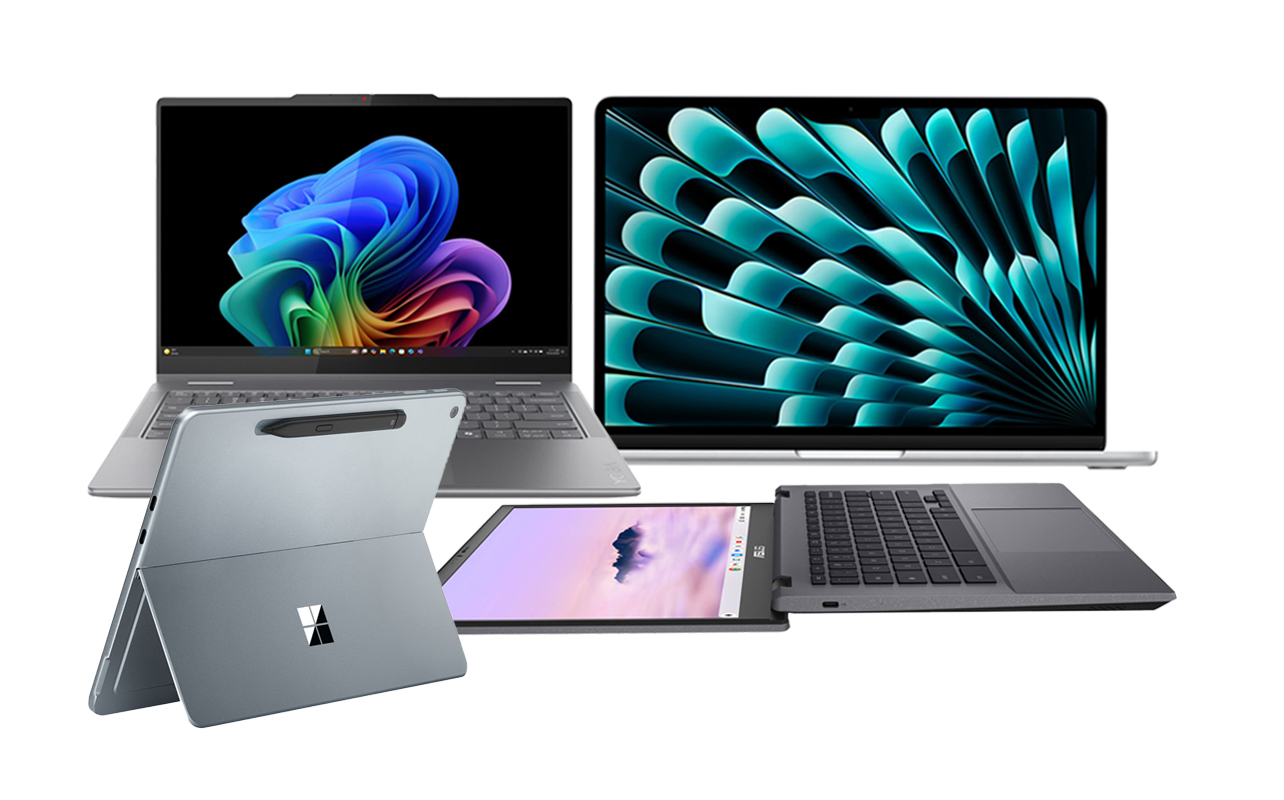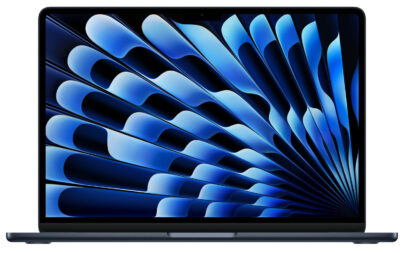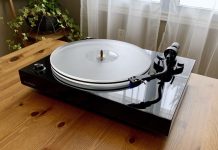
Laptops have been outselling desktop PCs for over a decade—and it’s easy to see why. They’re portable, versatile, and powerful, making them ideal for students, professionals, creators, and gamers alike. But with so many models, features, and specs on the market, knowing how to choose a laptop can feel overwhelming.
That’s why this laptop buying guide is here to help. We break down everything you need to consider—from screen sizes and processors to operating systems and smart features—so you can confidently find the perfect laptop that fits your lifestyle and needs.
Table of contents
- Windows, Mac, or Chrome
- Types of laptops
- Key components explained
- Smart features to look for
- Final tips and upgrades
When we talk about laptops, we’re using an umbrella term that covers a series of portable PCs, each suited for a different purpose. While the general clamshell form factor is the common thread, each can be very different when it comes to capabilities, intended use and price.
Choosing your platform: Windows, Mac, or Chrome?
Choosing the right operating system is foundational when picking a laptop. Generally, it makes sense to stick with the platform you know and prefer. However, understanding the differences can help guide your decision based on ecosystem, app compatibility, and future needs.

MacBooks run on Apple’s custom processors, known as Apple Silicon. The latest M3 chip brings improved graphics, better performance, and enhanced battery efficiency. Each new generation builds on these strengths, ensuring fast, reliable operation and seamless macOS integration. Thanks to their stability and design, MacBooks remain favorites among creatives and professionals. However, if you need touchscreen or convertible options, you might want to explore other platforms.
Windows laptops come pre-installed with Windows 11, which is now standard on most new devices. They offer a variety of processors including Intel’s 13th and 14th Gen Core, AMD Ryzen 7000 and 8000 series, and Snapdragon X Elite chips. These processors provide options tailored for speed, graphics, multitasking, and AI-enhanced performance. Moreover, Windows laptops often feature Microsoft Copilot, which delivers AI-assisted tools for writing, research, and creative tasks. For those seeking cutting-edge AI features, exploring Copilot+ PCs is worthwhile.
Chromebooks run on Google’s Chrome OS, focusing on cloud-based applications. Many support Android apps from the Google Play Store and some include stylus input, making them especially useful for students and those who work mostly online. Lightweight, secure, and affordable, Chromebooks provide a streamlined experience ideal for everyday tasks.
Types of laptops
Laptops come in several categories based on how you use them:
Traditional or everyday laptops
Most laptops including MacBooks, many Windows devices, and Chromebooks—fall into the everyday laptop category. They’re designed to handle a wide range of tasks like web browsing, word processing, streaming, and even light gaming. These laptops come in various sizes, with 13- to 15-inch displays being the most popular, and can often be configured with additional RAM or storage to match your needs. Whether it’s for home, school, or work, choosing the right combination of price and capability is key.

A newer and rapidly growing category is AI-powered laptops, including Copilot+ PCs. These devices feature built-in NPUs that accelerate tasks like real-time transcription, creative editing, and workflow automation. They’re especially useful for multitaskers, creators, and professionals who want a laptop that’s built for smarter, faster performance right out of the box.
2-in-1 laptops
2-in-1 laptops combine the functionality of a laptop and a tablet, offering a flexible solution for those who want both in one device. Most are Windows-based, though you’ll find some Chromebook options too. Their versatile designs allow multiple modes—like tent mode for watching videos or tablet mode for touchscreen use—thanks to clever hinges that flip, twist, or slide. This makes them ideal for stylus use, whether you’re taking notes, sketching, or marking up documents.

Some models take it even further with detachable screens, letting you use the display as a standalone tablet. And with the emergence of foldable laptops, the screen itself can bend and expand your workspace in exciting new ways, all while remaining ultra-portable. If flexibility is high on your list, a 2-in-1 could be the perfect choice.
Gaming laptops
Gaming laptops are engineered to handle one of the most demanding computing tasks—playing modern video games—within a portable form factor. These Windows-based machines pack high-performance components like NVIDIA RTX 40-series or AMD Radeon 7000 graphics cards, alongside powerful CPUs and enhanced cooling systems. While they’ve traditionally been larger and heavier to accommodate all this power, recent advancements have led to sleeker designs that resemble ultrabooks from just a few years ago.

Battery life has also improved significantly. While older gaming laptops were limited to 3 to 5 hours, newer models can often run all day for everyday tasks, striking a much better balance between performance and portability. With large, high-resolution displays, full-size keyboards, and a wide array of ports, gaming laptops are also a favourite among professionals running demanding software like Photoshop, video editing tools, or 3D design programs—not just gamers.
Laptop components

There are many components that go into every laptop, but there are four that have the biggest impact on a laptop’s performance and capabilities, and cost: The CPU, RAM, storage space, and display. Most laptops rely on their CPU’s integrated graphics, but when choosing a gaming laptop, the graphics card becomes the critical component. When searching for a laptop online at Best Buy, you will find most of the main components listed right at the top of a product page next to the product name.
1. CPU: cores and clock speed
The processor, or CPU, is the engine behind your laptop’s speed and responsiveness. Whether you’re multitasking with spreadsheets, editing photos, or joining video calls, a powerful processor ensures everything runs smoothly. Here are the leading options you’ll find in today’s laptops:
- Intel 13th and 14th Gen: Great all-around performers for everyday use, balancing speed, efficiency, and multitasking.
- AMD Ryzen 7000/8000 series: Excellent for creative workloads and users who want strong performance paired with integrated graphics.
- Apple M-series chips: Custom silicon that powers MacBooks with exceptional energy efficiency, silent operation, and seamless macOS performance.
- Snapdragon X Elite: Designed for ultra-portable Windows laptops with a focus on AI features and all-day battery life.
A new addition to many processors is the Neural Processing Unit (NPU)—a specialized chip that handles real-time AI features like background blur in video calls, live translation, and smart search indexing, freeing up your CPU to focus on everything else.
2. RAM: what is it and how much do you need?
RAM (Random Access Memory) plays a key role in how smoothly your laptop runs—especially when you’re juggling multiple apps or browser tabs.
- 16GB is the sweet spot for most people. It handles everyday tasks like web browsing, office work, video streaming, and even light photo editing with ease.
- 8GB can still get the job done for basic tasks on a Chromebook or a secondary device used occasionally.
- 32GB or more is ideal if you’re into video editing, 3D design, heavy multitasking, or running professional creative software.
Since many modern laptops have non-upgradable RAM, it’s a good idea to future-proof your setup by getting as much as your budget allows.
3. Storage: SSD vs HDD and capacity
Your laptop’s storage determines how much room you have for files, photos, apps, and games—and how fast you can access them.
- 512GB SSD is a great starting point for most users. It offers fast boot times, quick app launches, and enough space for everyday documents, media, and programs.
- 1TB SSD (or higher) is ideal for power users—think gamers, content creators, or anyone storing large video files or project libraries.
- Cloud storage (like OneDrive, Google Drive, or iCloud) can work alongside your physical storage to offload files, making it easy to back up important documents and access them across devices.
Traditional hard disk drives (HDDs) are rarely found in new laptops. SSDs are now the standard for speed, durability, and energy efficiency.
4.The display: what to look for?
Your laptop screen does more than just show content. It shapes your entire computing experience. Here are a few key features to consider:
- OLED and mini-LED panels deliver vibrant colours and deep contrast, making them ideal for binge-watchers, photographers, and anyone who values stunning visuals.
- 120Hz (or higher) refresh rates create smoother motion for gamers and users working with animation or video editing.
- 16:10 and 3:2 aspect ratios give you more vertical space on-screen—great for writing, reading, and working with spreadsheets.
- Touchscreens are common on 2-in-1 laptops and Chromebooks, especially useful for sketching, annotating, or navigating with ease. (MacBooks, however, still don’t include touchscreen support.)
Not sure what size is right for you? Visit our Laptop size guide for help choosing the perfect fit.
Smart features worth considering when buying a laptop

Today’s laptops go far beyond the basics, offering clever features and future-ready connectivity that can elevate your experience—whether you’re working, creating, or just streaming your favourite shows.
- Wi-Fi 7 delivers ultra-fast, more stable internet—perfect for video calls, cloud gaming, or heavy multitasking (with a compatible router).
- USB4 and Thunderbolt 4 ports let you transfer massive files in seconds, hook up multiple external displays, or charge your laptop at lightning speed.
- AI-enhanced webcams and mics are now common in premium models. Features like auto-framing, noise cancellation, and background blur make video calls feel more professional.
- Second-screen innovations like the ASUS ScreenPad or Lenovo’s e-Ink pads give you extra space for tools, apps, or even handwritten notes—right on your laptop.
- Repairable, sustainable designs are gaining popularity. Laptops like Framework make it easy to upgrade parts over time, reducing e-waste and extending your device’s lifespan.
Curious about how all these pieces come together? Check out our full Laptop specifications: what you need to know guide.
Final consideration: how upgradable is a laptop
Unlike desktops, many modern laptops come with soldered RAM and storage, meaning you can’t upgrade them later. That makes it important to choose the right specs from the start.
- Plan for the future by selecting the highest RAM and SSD capacity your budget allows.
- If flexibility is important to you, consider modular laptops like those from Framework, which are built with upgradeability and sustainability in mind.
Want a better sense of how different laptop types compare? Our Notebook vs Chromebook vs Laptop guide can help you sort it out.
Ready to buy a laptop?
Whether you’re gearing up for school, upgrading your home office, or searching for a high-performance creative machine, the right laptop is out there waiting for you.
This laptop buying guide has equipped you with everything you need to make an informed choice. Explore our latest laptop deals and back-to-school specials. And don’t forget the extras! Boost your setup with laptop accessories like ergonomic gear, laptop bags, external drives, and docking stations.
A right laptop can transform how you work, learn, and create. Take the next step confidently with our trusted laptop buying guide.








Very informative article.
It is actually up to the individual’s goal. It is critical to purchase a modest and long-lasting battery for commercial use. However, in gaming, performance is critical. I prefer a combination of them since it allows me to use it for a variety of purposes. Thank you for the suggestions.
Before you begin to look at laptops, you must figure out which operating system (OS) works best for you. Thinking through what software you need to run and on which operating systems that software runs will help you determine the hardware you need.
if u are looking for buying new laptop then this post really helpful for u. nice content. keep it up.
Nothing about speakers?
Very helpful, thank you!
Thanks for your good website and information !
interesting ! Thanks for information !
ok everything perfect
Loved the articles it really helped me.
I buy asus flip s ux370ua
Nice detailed post. But I prefer mix of value and quality. I am looking out for long battery life and performance. I think Asus will do the best.
In my opnion asus have good features relating prices so anyone can go for asus..and battery back up is also good..good for travelling.
It is actually up to the person’s purpose. For business it is important to buy a small size and long life battery. But for gaming the performance is essential. I prefer the mixture of them so I can use it for any purpose. Thanks for tips.
Please log into Bestbuy.ca, Price will be displayed in CDN Dollars.
Excellent everything is posted in this article, what you need to know about before make a Laptop Purchase.
Excellent article although I wish Best Buy could explain further into the brands (HP, Dell, Apple, etc). Additionally, there should be some information regarding materials used in laptops, and how their weight is differed (plastic or aluminum).
Loved the articles it really helped me choose a laptop
Comments are closed.